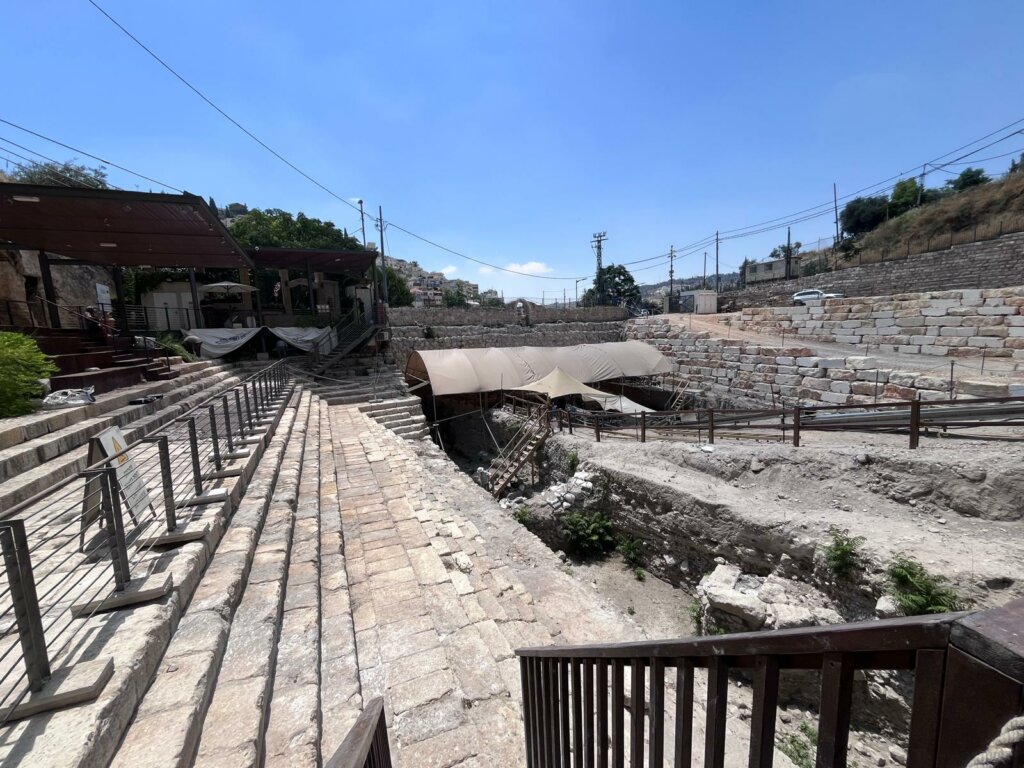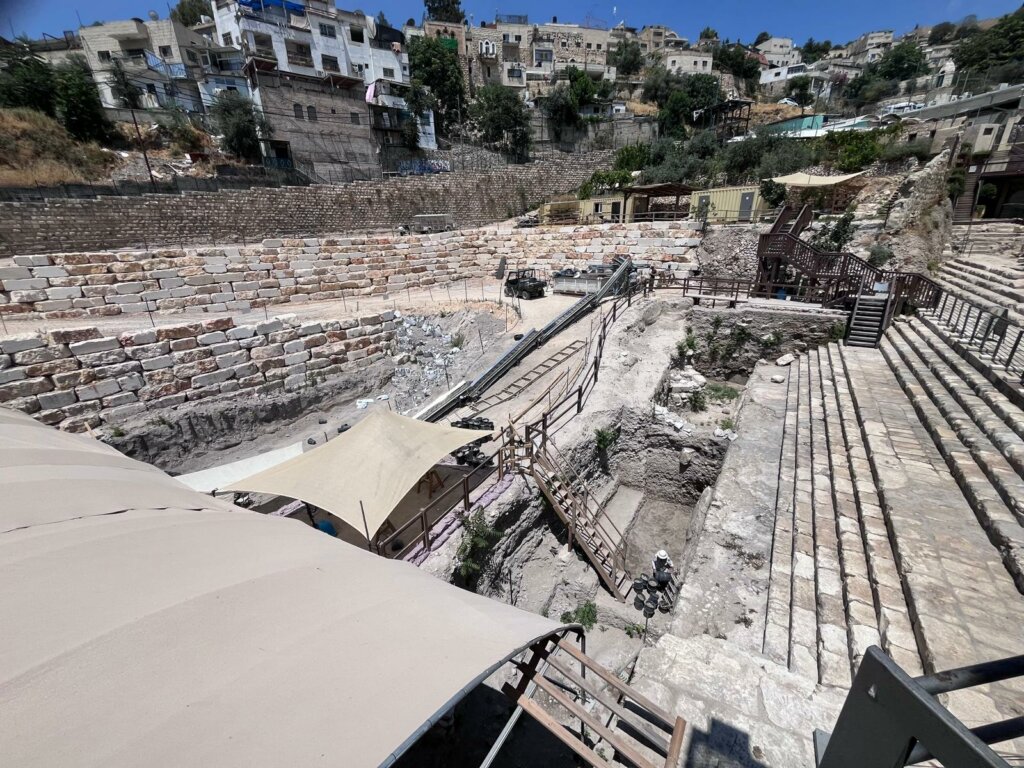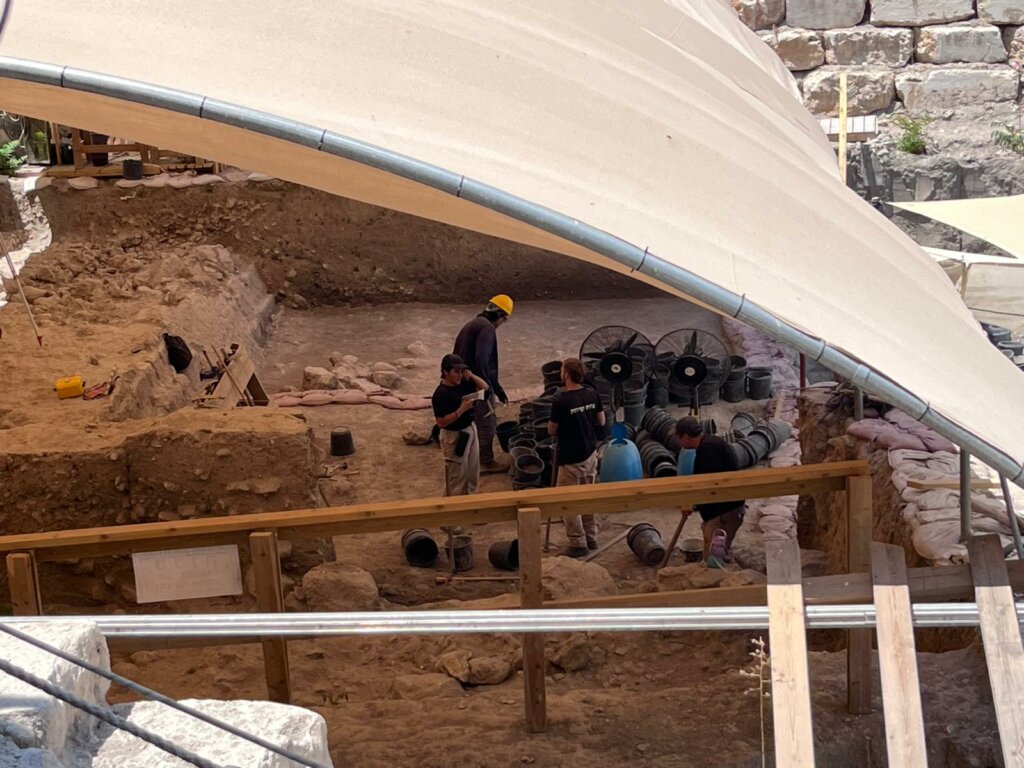I’m back from a 9,000-mile road trip, and though there are not many active excavations in Israel this summer, I have a lot of stories to catch up on. This roundup will be a six-parter, with today’s focus on Jerusalem.
A stone quarry with massive building stones was discovered in a northern neighborhood of Jerusalem. It was in use when Herod was carrying out his many construction projects, and the “geological signature” matches that of stone slabs used in the “Pilgrim’s Road” that runs from the Pool of Siloam to the Temple Mount.
The publication of a journal article has brought a fresh wave of attention to the discovery of a large moat that separated Jerusalem’s Temple Mount from the City of David during the time of the monarchy.
Construction workers discovered a Medieval altar in the Church of the Holy Sepulcher.
Nails from the sandals of Roman soldiers have been discovered in the Temple Mount Sifting Project.
A stone fragment with a drilled hole was uncovered in the Temple Mount Sifting Project.
“The Kishle moat at the Citadel in Jerusalem is now hosting the ‘Umbilicus’ exhibition . . . [which] delves into ancient ideas of Jerusalem being the center of the world.”
“The Israel Antiquities Authority is offering limited tours this summer of its Jay and Jeanie Schottenstein National Campus for the Archaeology of Israel, a new and modern facility, long under construction next to the Israel Museum in Jerusalem.” The campus is expected to be fully open in a year or two.
Chandler Collins considers whether the evidence supports the popular interpretation that the Broad Wall in Jerusalem cut through houses, as described in Isaiah 22:10.
Bryan Windle evaluates the evidence to decide whether the ivory pomegranate inscription mentioning the temple is authentic.
Tuvia Pollack provides an overview of the archaeological significance of the City of David.
Ariel David writes about Israel’s Finkelstein’s new book, Jerusalem the Center of the Universe: Its Archaeology and History (1800–100 BCE). The book is available from SBL Press or from Amazon for $50-$85.
Nachi Weinstein interviews Jodi Magness about the city of Jerusalem throughout history (85 min).
On Sept. 4, the Friends of ASOR will be hosting a free webinar with Jodi Magness explaining, “What Makes Jerusalem Special?”
Jodi Magness is guest on the Biblical World podcast to discuss her new book, the Huqoq synagogue mosaic, the importance of pottery, and more.
Registration is now open for fall online courses at the Jerusalem Seminary. Courses include “The Life and Land of Yeshua,” “Journeying with Paul,” and a number of Biblical Hebrew courses.
BiblePlaces.com offers a number of photo collections related to Jerusalem, including our classic Pictorial Library collection on Jerusalem (1,500 photos), the American Colony collection on Jerusalem (650 photos), and the Photo Companion to the Gospels (10,000 slides).
HT: Agade, Gordon Franz, Arne Halbakken, Ted Weis, Steven Anderson, Gordon Dickson, Mark V. Hoffman


